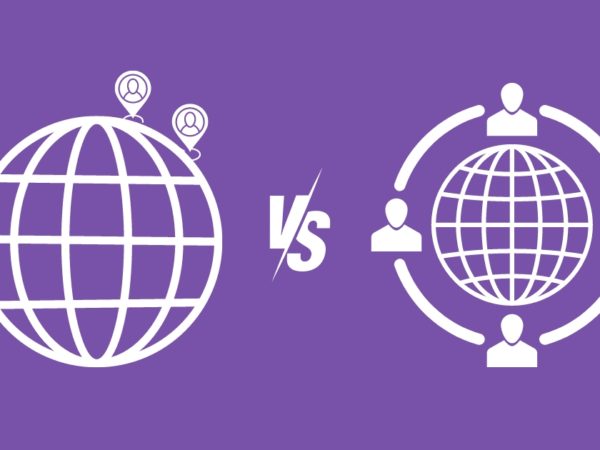Project cost estimation is not simple math but a complex process.
For project management to be successful, a good cost estimation is needed. Many costs appear throughout the project lifecycle, but the accurate estimation method makes all the difference from a failed plan to a successful one.
It involves direct client input and allows the project manager and team to put their heads together for a perfect understanding of the business value, feature priorities, nice-to-haves lists, etc.
In this article, you will learn how to deal with these risks and related issues by understanding cost estimation, its importance, how to start with it, its techniques, and other important things.
Let’s begin!
What Is Cost Estimation for a Project?
Cost estimation is taking direct costs, indirect costs, and many other factors into account to calculate a project budget that meets your financial commitment. This is indeed an important step for a successful project.
From building a road to developing an application, project cost estimation techniques can be applied in every field. In the project management lifecycle, cost estimation is the addition of individual costs using estimating methods and valid data. This is used to estimate future costs of a project based on today’s experience.
To do this, you will need to follow some simple steps:
- Clear identification of the tasks
- Participation in preparing costs estimates
- Availability of the proper data
- Standardized structures for cost estimates
- Provisions for future uncertainties
- Excluded costs
- Independent estimates reviews
- Revising estimates
In simple terms, cost estimation is telling the finances and resources you need to complete a project in advance with a defined scope. A project manager and the team must consider direct and indirect costs to proceed with an estimation.
Some typical elements you need to consider are labor, facilities, resources, materials, equipment, vendors, risks, and time.
Why Is Cost Estimation Important?
Estimating a project cost is possible by using cost estimation techniques and a work breakdown structure (WBS). This is used to visualize the scope of your project and assign costs to every project task.
Through project cost estimation, a client can judge how a project manager will be able to handle the project and achieve the objectives and goals of the project. This way, project stakeholders and executives forecast the quality they will receive after its completion.
For a successful project completion, stakeholders must plan a budget further accepted by stakeholders to meet quality expectations. A sound project estimate is necessary to ensure the actual effort. This helps you stay on track and schedule.
When to Perform Cost Estimation?
Well, cost estimation is used to forecast the cost, price, and quantity of the resources required to complete a project. The accuracy of the project cost estimate depends on the project’s levels, the project, the design and conditions of the project, and the estimated values of the resources you need.
When you have resources, equipment, labor, and more, you can start estimating the overall cost of the project by mentioning the scope and quality of the project. Thus, it requires techniques, duration, tasks, and more to forecast the total cost.
How to Estimate the Cost Accurately?
When you estimate a project’s costs, you need to break the project into individual tasks and figure out which team will be doing what. Once a project is ready, the key goal is to ensure you don’t cross the budget.
Performing cost estimation involves some simple steps. Let’s discuss them one by one.
Compile a List of Tasks and Resources Required
The first step of the cost estimation process is figuring out what resources and tasks you need. To do this, you can break the whole project into small pieces. It involves research, design, front-end or back-end development, copywriting, testing or bug fixes, launching, and more.
The task list varies according to the project, but the steps remain the same. When you split the work among different team members as per the hourly rate, it will be easier for you to calculate the labor cost and time required to submit the project.
Identify and Allocate Resources
You need to ensure that you have enough people with the right skill required for the project to allocate resources. You need to list the available members and assign tasks per their expertise. This results in adequate resource planning, which leads to the successful completion of the project.
Estimate the Task Length
Here, you need to estimate the length of the task to create your project schedule with some buffer. Since you can’t predict the future of a person, it is more likely for your team to take an extra buffer so that project will complete at the right time without any stress.
Using the time tracking method, you can plot the project’s duration accurately. You can’t expect a 100% utilization rate from your team. Obviously, this will lead to exhaustion. So, the ideal utilization rate for every team is 80%, leaving some free time for your team.
Calculate the Project Cost
Many times, there are similar records that you will find in your database. You can use previous records to analyze how long every task took and the cost.
If you don’t have any, you need to calculate it from scratch. First, you need to create a rough estimation so your team can meet and decide the exact time and cost.
Use Cost Estimation Tools
It is crucial to keep track of everything. To avoid derailing, you need to focus on the changes and update them accordingly. With management tools, you can manage your team’s tasks daily without hassle, resulting in successful project completion.
This way, you can track the budget as well. According to the log hour of each member, the tool forecasts the project status. Thus, you can track how much project is yet to complete and the time left.
Estimate vs. Quote: Difference
Estimates and quotes serve similar purposes, but the terms are not interchangeable. Both are different when it comes to what you present in the list. Using the correct term at the right time ensures your client has the correct information they need to decide.
Estimate
An estimate is an educated or rough guess of how much a specific job will cost. It is based on the available information at that time. The estimate can be changed once you get updated information.
Suppose you take the contract for remodeling a house, and the client needs to know the cost. First, you will need to check the size of the house and rooms, how much work needs to be done, and what to add and subtract. In this case, you can give an estimate based on their requirement, let’s say, $30,000.
When you start the work, suddenly, you see the price of the paint slightly increase due to the quality of the paint that the client demands. At that time, your estimation will be slightly updated accordingly.
Quote
On the other hand, a quote is a fixed statement of the job within a specific timeframe. It is legally binding and can’t be changed unless your client asks for some work outside the scope of the job. If the scope changes, you will need to update the change order accordingly and come to a final agreement.
Let’s take the same example. If the client asks for a quote instead of an estimate at the beginning of the work, you need to carefully study the price of labor, materials, time, etc., to give a final quotation to your client, which can’t be changed later unless the client wants some extra work which is not mentioned in the quotation list.
However, estimation is the best practice when you are unsure about the price of materials and the client’s expectations. But, when you provide regular service, know the price of your services and materials very well, and want to protect yourself from extra work, a quotation can be the better choice.
Also, estimates are negotiable, whereas quotes are exact and legally binding.
Commonly Practiced Cost Estimation Techniques
Depending on the project size and type, executive’s and stakeholder’s expectations, billing method, and other factors, various tools and techniques can be applied to perform project cost estimation. They are as follows:
- Analogous Estimating: This technique shows precedents that help you define the future costs in the early stages of your project by using historical data.
- Bottom-up Estimating: Bottom-up technique is a more granular approach that estimates single tasks and then sums them up to get the overall cost of a project. This method is used in complex projects where variables are even more, such as construction projects, software development, etc.
- Top-down Estimating: Top-down estimating technique is a simple technique to determine the scope of work after finding out the total project cost. This method is commonly used to estimate different elements on a fixed price initially specified by the client.
- Parametric Estimating: Parametric estimating is a statistical modeling approach that uses historical data of some key cost drivers to calculate the new task cost.
- Three-point Estimate: This technique comes with three different scenarios, including most likely, optimistic, and pessimistic. These are put into the equation to get the final estimation.
- Reserve Analysis: This technique tells how much contingency reserve needs to be allocated. This method tries to avoid uncertainty.
- Cost of Quality: This approach uses money spent on or during the project to skip failures. This also uses money applied after the successful project to address failures.
Cost Estimation Parameters
You need to satisfy your client with your estimates so that your client forecasts the project quality. But, many projects meet failures due to bad cost estimation.
Let’s discuss the parameters you need to consider while estimating your project cost.
Time
Time is a major factor when estimating the project cost. Time is directly proportional to effort. The sum of all the time spent on the project is the overall effort of the team to finish the project. The time needed to complete individual tasks, along with buffer time, is a necessary step to present proper cost estimation.
Effort
The effort is also a key parameter in project cost estimation. However, the effort required to finish a project gives you a clear idea about the cost. Here, a project manager needs to consider the resources a team will get to finish the project, and the efforts can be calculated according to the resources. Fewer resources result in more effort, and more resources lead to less effort.
Resources
As discussed earlier in this article, resources are also considered while estimating the cost. Resource management is a process of having the right factors at the time of need for a specific task in a project. With limited resources, it is hard to calculate the overall cost of a project.
Accuracy
A project’s cost estimate can only be accepted if it’s accurate. By using the most appropriate cost estimation technique, preparing for unexpected costs, and revising project estimates throughout the project, you can achieve precision.
Documentation
While you brainstorm ideas with your team, it is necessary to document everything so that you can make the right decision at the right time. You will need to record all the assumptions to prevent misunderstandings while allowing the team to comprehend a justification of the estimation.
Credibility
Generally, estimating the project cost is based on previous experience or facts. While calculating the expenses, you can enhance the estimate’s credibility by adding historical data and expert opinions.
Verification
Always verify before proceeding to the final decision. You can verify the mathematical operations used for project cost estimation and check whether it is accurate. You can rely on the documentation to assure the accuracy of the calculations.
Risk Identification
You can plan for risks while doing the estimate. This is a crucial factor that needs consideration. Some risks are often, while some are accidental. You need to manage the estimate effectively by adding some buffer time. This ensures proper completion of the project within the given time and sufficient funds at the time of urgent requirements.
Some Steps In Cost Estimation
For valid and reliable cost estimates, you must follow some simple steps.
- Define the purpose of the project
- Develop a rough plan by arranging a meeting with your team members
- Define the characteristics of the system, performance, and purpose
- Determine a suitable cost-estimating technique
- Identify assumptions, rule, and obtain data
- Develop point estimate
- Conduct sensitivity analysis
- Conduct uncertainty and risk analysis
- Document the estimate
- Update the estimate timely according to the effort and resources
Conclusion
Cost estimation is used to predict the overall project cost along with the price and quantity of the resources needed within the scope of a project. It is done to make effective investment decisions. For this, you will need to break down the complete project into smaller parts to make a better estimate of the resources, labor, and time.
However, cost estimation is easier said than done. Therefore, determining an accurate technique will help you create a successful cost estimation plan for your client.
You may also explore some best task and project management software.



